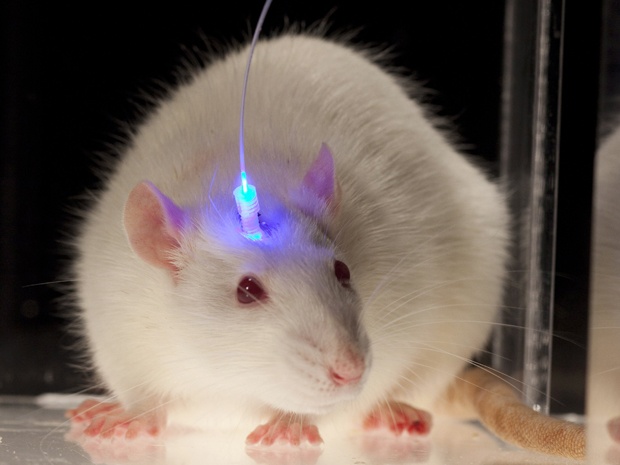
According to the Optogenetics Resource Center at Stanford University, optogenetics involves using genetics and light to control events within specific cells, in this case – brain tissue. Until recently, technology available for optogenetics has been comparable bulky and unwieldy, a problem which the Stanford researchers had hoped to address.
To this end, engineers at Stanford University have created the first miniature implantable device for delivering optogenetic light therapy to the brain.
 "This is a new way of delivering wireless power for optogenetics," said Stanford researcher Ada Poon, who is an assistant professor of electrical engineering. "It's much smaller and the mouse can move around during an experiment…I think other labs will be able to adapt this for their work," Poon said.
"This is a new way of delivering wireless power for optogenetics," said Stanford researcher Ada Poon, who is an assistant professor of electrical engineering. "It's much smaller and the mouse can move around during an experiment…I think other labs will be able to adapt this for their work," Poon said.
Traditionally, optogenetics has required a fiber optic cable attached to a mouse's head to deliver light and control nerves. With this somewhat restrictive headgear, mice can move freely in an open cage but can't navigate an enclosed space or burrow into a pile of sleeping cage-mates the way an unencumbered mouse could. Also, before an experiment a scientist has to handle the mouse to attach the cable, stressing the mouse and possibly altering the outcome of the experiment.
Previous optogentic methods involved complicated equipment that was rather cumbersome and had a tendency to restrict the mice model’s movements and behavior. In contrast, the miniaturized, implantable version has no such encumbrances. Poon said that creating the device was comparatively easy, whereas figuring out how to power it was extremely difficult.
With some help from the father of a fellow researcher and a specially constructed chamber, Poon was able to use the mouse's own body to transfer radio frequency energy that was just the right wavelength to resonate in a mouse.
The new wireless, implantable device is the first of its kind and will likely see applications in treating mental health disorders, movement disorders and diseases of the internal organs. They have a Stanford Bio-X grant to explore and possibly develop new treatments for chronic pain. (source: Stanford.edu)
 Researchers like these at Stanford University's many laboratories are invited to attend Biotechnology’s Calendar’s inaugural BioResearch Product Faire at Stanford University.
Researchers like these at Stanford University's many laboratories are invited to attend Biotechnology’s Calendar’s inaugural BioResearch Product Faire at Stanford University.
This inaugural event takes place on-campus at Stanford University and spaces are filling quickly. By participating in this event, lab supply and equipment vendors will be allowed to network with researchers who want to learn about the lates technology available in the world of lab supplies.
This is brand new life science event is taking place on January 15, 2016. To learn more about participating, click below:
For a full schedule of 2015 events, click here:




